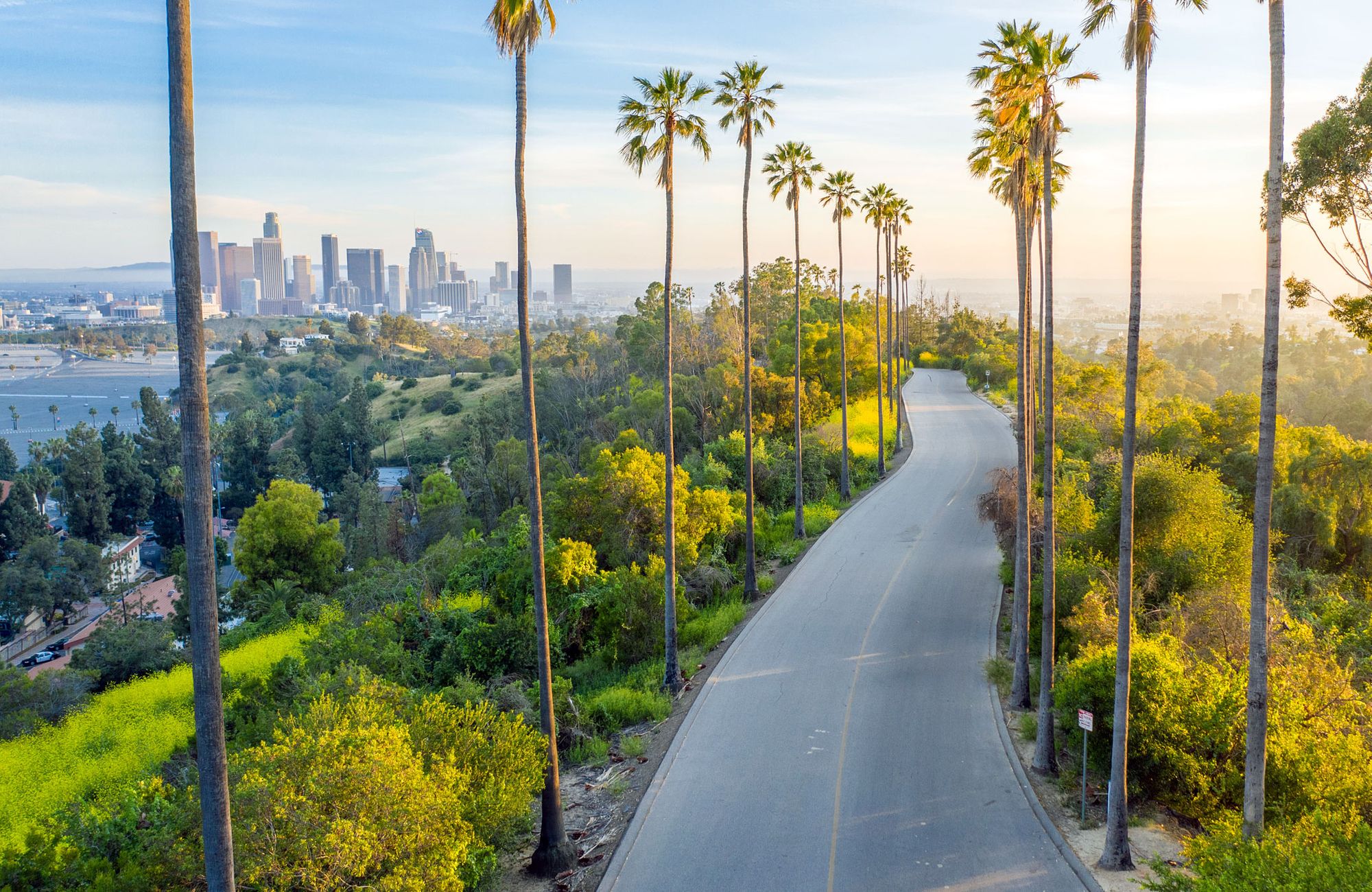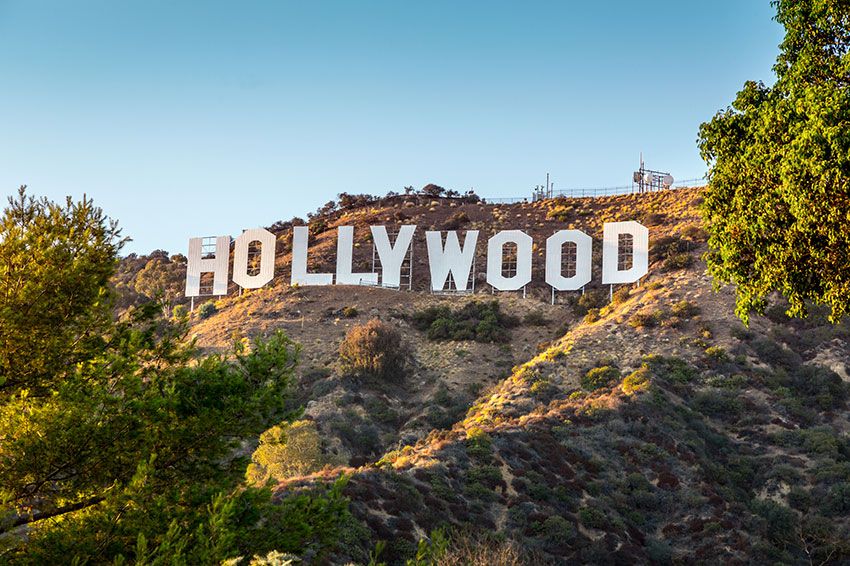The black dress. The pearls. The oversized sunglasses. The extra-long cigarette holder. The tiara. There are very few movie images that are as timeless as Audrey Hepburn in Breakfast at Tiffany's. The 1961 movie, based on Truman Capote’s 1958 novella, stars Hepburn as Holly Golightly, a young escort in New York City looking to find a wealthy, older man to marry. But when she meets struggling writer and neighbor Paul Varjak (George Peppard), things don’t go according to plan.
With New York City and fashion playing supporting characters, the romantic comedy has cemented itself in Hollywood history with generations of fans. Here are seven surprising facts about Breakfast at Tiffany's.
Truman Capote Wanted Marilyn Monroe To Play Holly Golightly

It’s hard to imagine any other actress besides Hepburn bringing Holly Golightly to life on the silver screen. But her casting faced some strong opposition from the book’s author. Capote had envisioned Marilyn Monroe in the role. He later stated, "Paramount double-crossed me in every way and cast Audrey. She was just wrong for that part."
Before signing onto the film, Hepburn herself had doubts. As an introvert, she felt unsure about playing the extroverted Holly. She questioned if she could find the right comedic tone. She also told one producer, "You have a wonderful script, but I can't play a hooker." Even after accepting the part, she was nervous as the film began shooting. Fortunately for viewers, Hepburn overcame her fears and delivered a performance for the ages.
The Film Was Mostly Shot in California

Breakfast at Tiffany's is a quintessential New York movie — but only spent eight days filming on location in New York City. After this, Hepburn and other cast members relocated to California, where the majority of the film was made.
The on-location sites for Breakfast at Tiffany's included Central Park, the New York Public Library, and the real Tiffany & Co. — in fact, the movie marked the first time that store welcomed a film production.
Hepburn Was Friends With the Designer of the Black Dress

Designer Hubert de Givenchy, who'd styled Hepburn for years, created the sleek black dress the actress wore in the opening scene of the movie. That gown became one of the film's most enduring images, yet the collaboration between designer and actress only began by chance.
In 1953, Hepburn needed a soigné Parisian wardrobe for her character's makeover in the movie Sabrina. She considered contacting fashion designer Cristóbal Balenciaga but instead opted for Givenchy. The designer, overwhelmed with the demands of an upcoming collection, only took the meeting because he assumed it was the famous Katharine Hepburn who wanted his help. (Audrey and Katherine are not related.) Fortunately, he still opted to assist a then-unknown Hepburn. It was the beginning of a long-running relationship that would make fashion and film history.
The Movie Had To Meet Strict Standards

When Breakfast at Tiffany's was made, the Motion Picture Production Code still held sway in Hollywood. It had strict guidelines regarding sex and morality, so a film about a woman whose survival is dependent on gentlemen providing $50 "for the powder room" was a dicey proposition. To appease the Code, the screenwriter included some elements — such as Holly wearing a bra and half-slip — that existed solely to get cut out of the script and lessen the blow of more suggestive scenes that got past the censors.
The studio also did its utmost to make the public forget that Holly was a sex worker. Paramount emphasized how Golightly was a "kook" in one press release, which also declared, "The star is Audrey Hepburn, not Tawdry Hepburn."
Mickey Rooney Never Really Apologized for His Role

To portray Holly's Japanese neighbor, Mr. Yunioshi, white actor Mickey Rooney taped his eyelids, inserted buck teeth, and adapted an exaggerated accent. This racist portrayal resulted in apologies and regrets after the film was released. Director Blake Edwards reportedly later said, "Looking back, I wish I had never done it ... and I would give anything to be able to recast it."
Yet for decades Rooney, who came of age when Hollywood insisted on casting white actors in Asian roles, believed there had been nothing amiss with his performance. "Never in all the more than 40 years after we made it — not one complaint," he said in 2008. "They hired me to do this overboard, and we had fun doing it." But even Rooney admitted that, had he been aware of the offense he would cause, he "wouldn't have done it."
“Moon River” Almost Didn’t Make It Into the Movie

Henry Mancini wasn't initially in the running to compose a song for Breakfast at Tiffany's, but convinced producers to listen to what became "Moon River." They loved his work but were uncertain about Hepburn singing the tune. Mancini insisted he'd worked with the actress in mind and had tailored it to her vocal range.
Hepburn did sing in the movie — but after production finished, a studio executive wanted to cut the song. One version of the story says that Hepburn responded with, "Over my dead body!" In another account, a producer declared, "You'll cut that song over my dead body!" "Moon River" remained in the film and ended up winning an Academy Award for Best Song. Mancini later stated, "I knew the song would be something very, very special. I knew the exact quality of [Hepburn's] voice and that she could sing 'Moon River' beautifully. To this day, no one has done it with more feeling or understanding."
The Impact of “Breakfast at Tiffany’s” Continues

Decades after the film’s release, Breakfast at Tiffany's remains a cultural touchstone. It's been part of songs, books, and television shows. Hepburn's working script from the movie was auctioned off for £632,750, about $846,619, in 2017. The winning bidder was Tiffany & Co., whose brand officer said at the time, "Still today, visitors from around the world travel to our iconic Fifth Avenue flagship to create their own Audrey Hepburn moment in front of the famed Tiffany windows."
Also in 2017, the Blue Box Café opened at Tiffany & Co. on Fifth Avenue. Its menu options included breakfast, of course. The café, currently closed, is scheduled to reopen in 2022, so people can resume having breakfast at Tiffany's.
